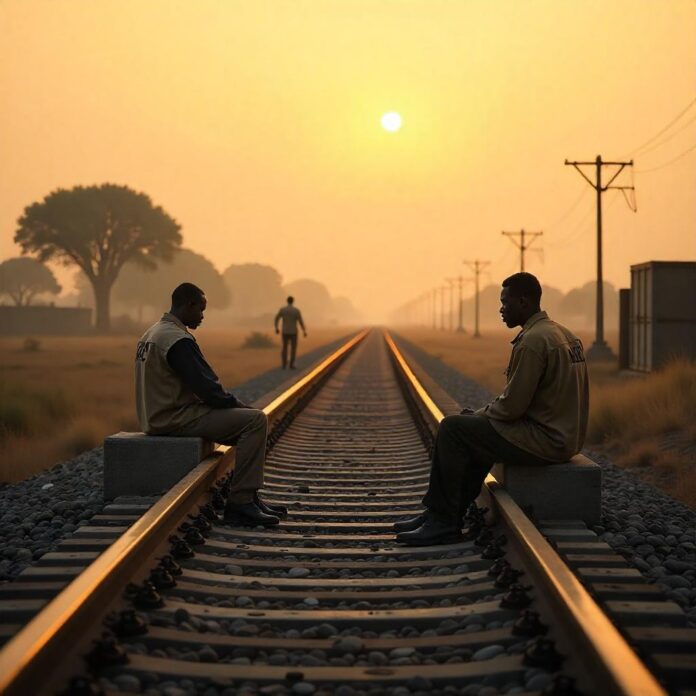The Weight of Waiting
Northern Nigeria’s economic arteries—once thriving with rail traffic—now lie dormant. The Kano-Minna corridor, a critical link between key commercial hubs, symbolizes both past glory and present stagnation. The Nigerian Railway Corporation’s July 2025 announcement sets a new deadline for revival, citing capital expenditure allocations and state partnerships as catalysts. Yet for idle workers and communities, delay deepens despair.
Anatomy of a Delay: Timelines, Tactics & Tensions
The Official Roadmap
NRC plans to reactivate key equipment by year-end using 2025 funding, targeting the Minna-Kaduna and Kaduna-Kano shuttle routes first. Niger, Kano, and Kaduna governments are negotiating operational roles—a shift enabled by rail’s move to Nigeria’s concurrent legislative list, empowering state involvement.
Persistent Roadblocks
Crippled tracks and stolen equipment necessitate security collaborations, diverting resources from revival to protection. Reliance on annual budgets leaves projects vulnerable, with staff alleging resources are hampered by bureaucratic delays.
The Kano-Minna Revival Phasing
Equipment Repair Phase: Reactivate signaling, tracks, and rolling stock between July and December 2025. Primary responsibility lies with NRC Engineering Units.
Route Testing Phase: Launch Minna-Kaduna shuttles in first quarter 2026 under Kaduna State Government oversight.
Full Operations Phase: Restore Kano-Minna freight and passenger services by mid-2026 through NRC collaboration with Niger and Kano governments.
Human Toll: Idle Hands, Stifled Dreams
Workforce in Crisis
Northern District—Nigeria’s largest by landmass and staff—remains largely inactive for years. Regional leadership advocates for additional route revivals to re-engage teams. Promotion arrears unpaid since 2018 plague personnel, with track laborers waiting a decade for advancement. Union representatives cite organizational mismanagement as key frustration.
Community Health at Risk
Zaria’s railway hospital—serving staff and locals—awaits revitalization. Its decay mirrors the rail crisis, severely limiting healthcare access in surrounding communities.
Vandalism Vortex: Security vs. Sustainability
The Infrastructure Underworld
Copper cables, track bolts, and signaling gear are systematically looted for scrap metal markets. Each theft sets reactivation timelines back by weeks, compounding reconstruction challenges.
NRC’s Stopgap Measures
Partnerships with security agencies focus on patrols, though railway staff advocate for community policing initiatives that would recruit locals as rail guardians for sustainable protection.
Economic Ripples: Trade, Trust & Lost Time
Commerce in Suspension
Minna’s grain traders and Kano’s leather exporters historically relied on affordable rail freight. Trucks now dominate transport—increasing costs by 40% and congesting highways. Station vendors, mechanics, and food stalls near depots remain shuttered, eroding grassroots livelihoods across the corridor.
Investor Hesitation
Repeated delays deter private logistics firms, with revival announcements losing credibility without visible progress. Economic uncertainty grows as agricultural supply chains remain disrupted.
The 2025 Revival Blueprint: Hope or Hollow Promise?
Tactical Shifts Needed
Beyond physical reactivation, NRC must address staff welfare to prevent internal discontent from undermining progress. Solar-powered sensors, drone surveillance, and community alert apps could deter vandals more effectively than reactive patrols.
Grassroots Mobilization
Adopt-a-Track initiatives could engage communities as stakeholders through local jobs and security training. Formalized cross-state councils with binding contracts would strengthen Kaduna-Niger-Kano partnerships beyond symbolic memorandums.
Tracks Toward Tomorrow
The Kano-Minna corridor represents more than steel and gravel—it’s a lifeline for Nigeria’s north. The 2025 deadline offers technical solutions, but true rail transport revival demands human-centered strategy: compensating workers, empowering communities, and integrating security into reconstruction. As authorities leverage legislative reforms, the ultimate test lies in transforming idle despair into collective ownership—before vandals and neglect erase the corridor’s remaining potential.


